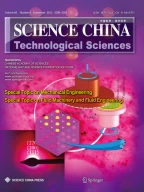Abstract
A new DOA estimation method is presented for the virtual array transformation and the improved spatial smoothing algorithm. The new method not only overcomes the weakness of the ambiguity of DOA estimation of arbitrary array, but also improves the abilities of resolution and de-correlation. It is proven to be effective by theoretical analyses and computer simulations. What is more, the method can improve the estimation and resolution of DOA under the condition of sparse practical array.
Similar content being viewed by others
References
Schmidt, R., Multiple emitter location and signal parameter estimation, IEEE Trans., 1986, AP-34(2): 267.
Ziskind, I., Wax, M., Maximum likelihood localization of multiple sources by alternating projection, IEEE Trans., 1988, ASSP-36(10): 1553.
Viberg, M., Ottersten, B., Detection and estimation in sensor arrays using weighted subspace fitting, IEEE Trans., 1991, SP-39(11): 2431.
Shan, T., Wax, M., Kailath, T. K., On spatial smoothing for direction of arrival estimation of coherent signals, IEEE Trans., 1985, ASSP-33(4): 806.
Williams, R. T., An improved spatial smoothing technique for bearing estimation on a multipath environment, IEEE Trans., 1989, ASSP-36(4): 425.
Zoltowski, M. D., Mathews, C. P., Real-time frequency and 2-D angle estimation with sub-nyquist spatio-temporal sampling, IEEE Trans., 1994, SP-42(10): 2781.
Haykin, S. P., Reiliy, J., Kezys, V. et al., Some aspects of array signal processing, IEEE Proc. F., 1992, 139(1): 1.
Eiges, R., Griffiths, H. D., Mode-space spatial spectral estimation for circular arrays, IEEE Proc. Radar, Sonar Navig., 1994, 14(6): 300.
Friedlander, B., Direction finding using spatial smoothing with interpolated arrays, IEEE Trans., 1992, AES-28(2): 574.
Cadzow, J. A., Signal enhancement—a composite property mapping algorithm, IEEE Trans., 1988, ASSP-36(1): 49.
Stoica, P., Nehorai, A., MUSIC, Maximum likelihood, and Cramer-Rao bound, ASSP-37, 1989, IEEE Trans. on ASSP-37 (5): 720.
Author information
Authors and Affiliations
Corresponding author
Rights and permissions
About this article
Cite this article
Wang, Y., Chen, H. & Wan, S. An effective DOA method via virtual array transformation. Sci. China Ser. E-Technol. Sci. 44, 75–82 (2001). https://doi.org/10.1007/BF02916727
Received:
Issue Date:
DOI: https://doi.org/10.1007/BF02916727
